SEO for Beginners: A Guide to Local SEO
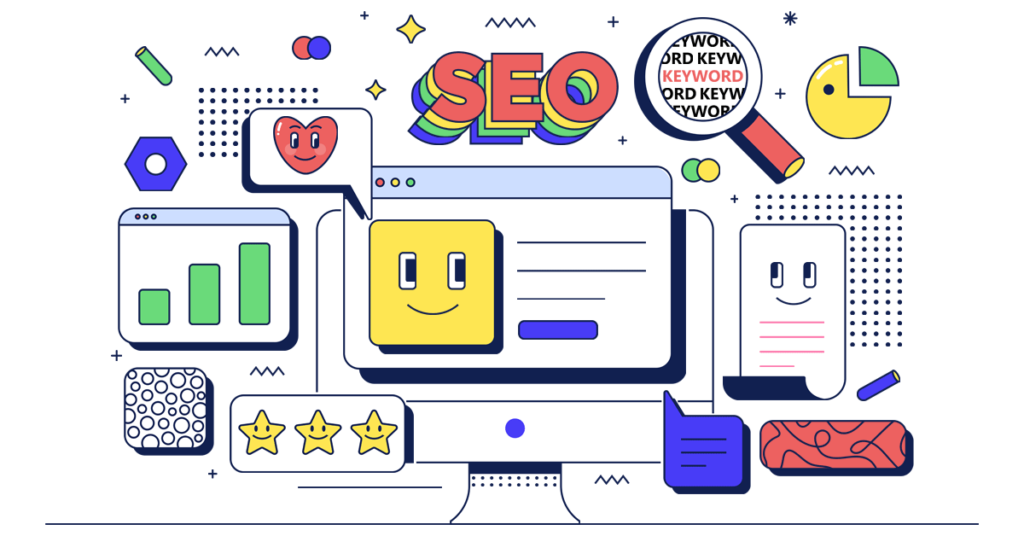
Local search engine optimization, or local SEO, is the process of optimizing your website to gain more local presence and website traffic.
Top common local SEO approaches are:
- Optimizing your Google Business profile
- Finding local keywords
- Creating locally-relevant content
A company that has a physical location or serves clients within a geographic area can benefit tremendously from local SEO.
Here’s what a local search result looks like on Google:
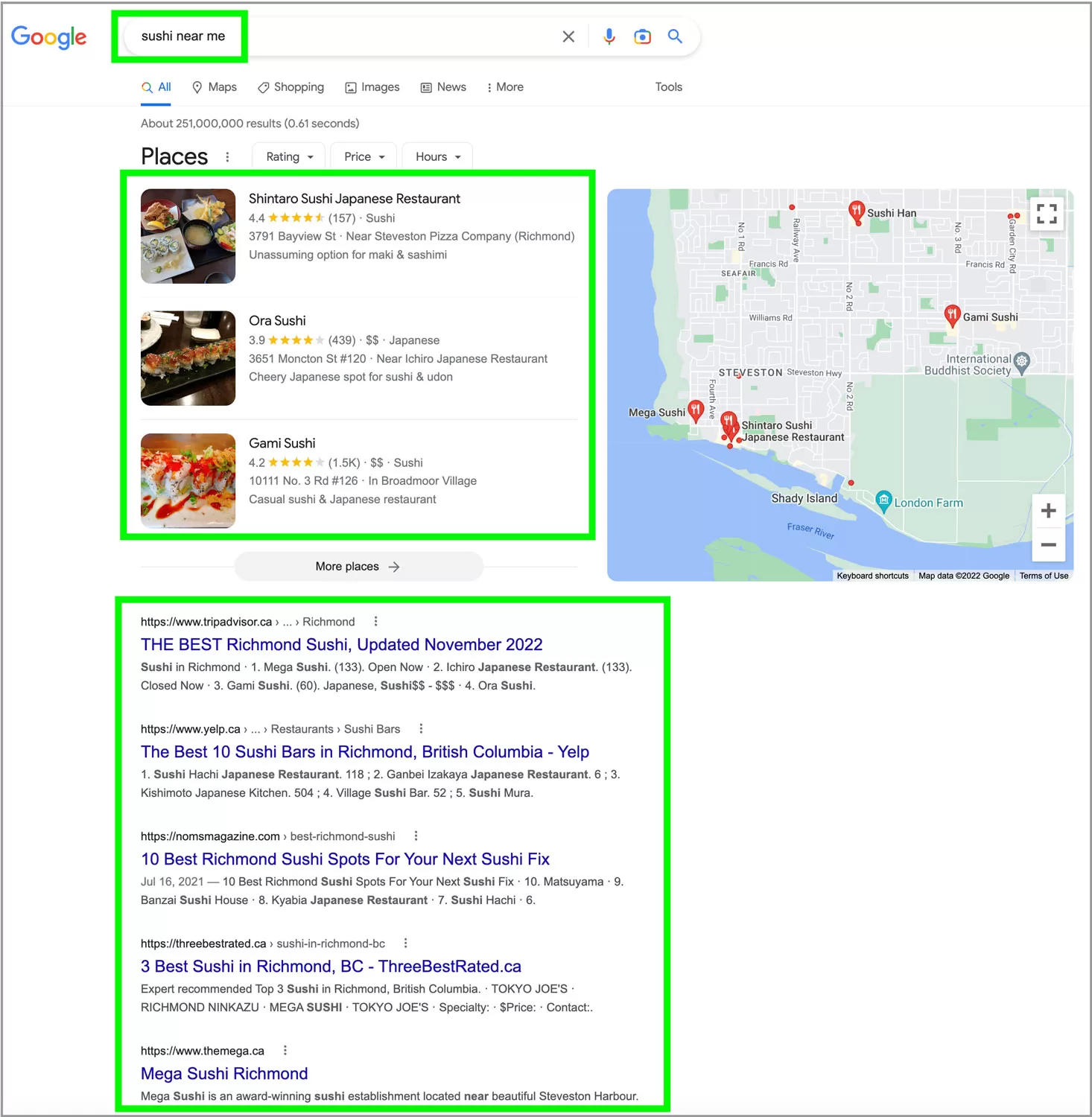
Roughly over 30% of Google searches are related to location; that’s billions of searches every day.
The best way to get your local business in front of these search results is to use local SEO. Here’s how local SEO works.
How Local SEO Works
In addition to Google’s usual ranking factors, such as pagespeed or content, Google’s local search algorithm uses three factors to help find the best match:
- Relevance (how closely related a result is to the words a searcher uses in their query)
- Distance (how close Google believes a user is to a business when they search)
- Prominence (how important Google thinks a business is among its competitors)
Then, Google displays two types of search results for local searches: the “local pack” results (Google Maps and Business Profiles) and organic results.
Organic results are the “normal” blue link search results we’re all used to seeing on Google.
A local pack (or map pack) is a Google feature that shows the top local business listings and a map.
Local pack:
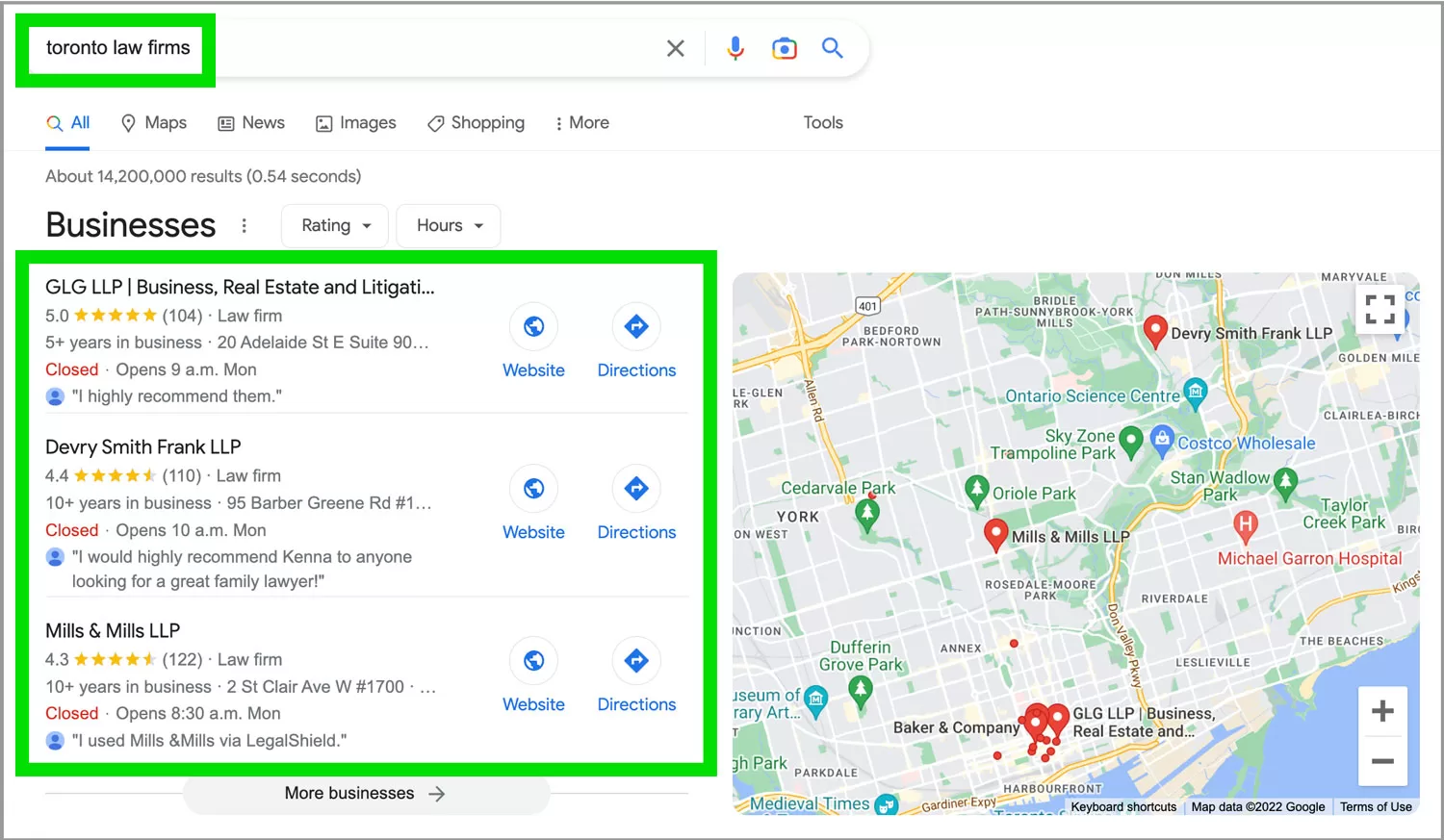
Local search results are typically shown below the local pack.
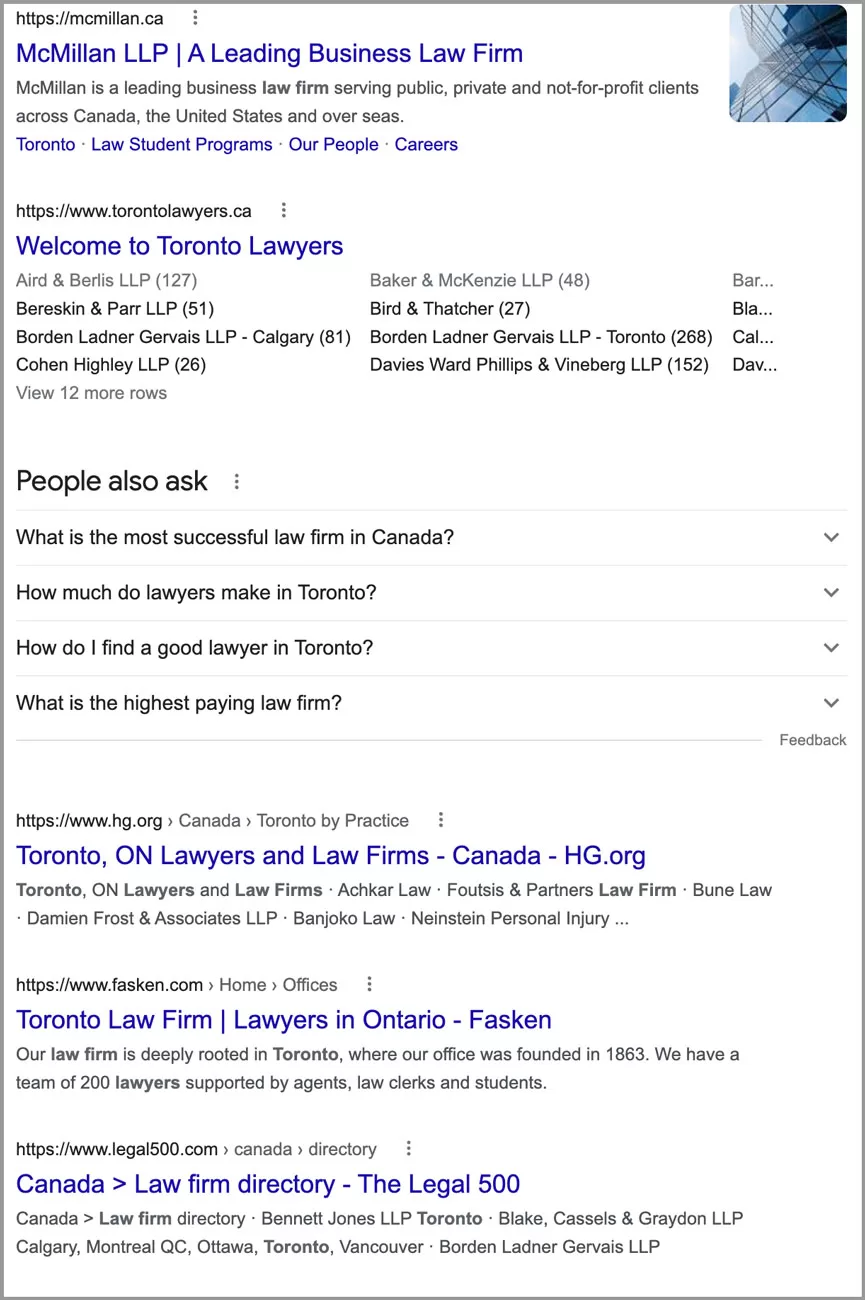
However, Google doesn’t just show local results for queries that contain a specific city, state or “near me” keyword.
If Google believes the intent of your search is local, it’ll display local results, even if the keyword isn’t explicitly local.
For example, if you were in Vancouver and searched for “coffee shops,” Google would still display a local pack for Vancouver tattoo shops.
Like this:
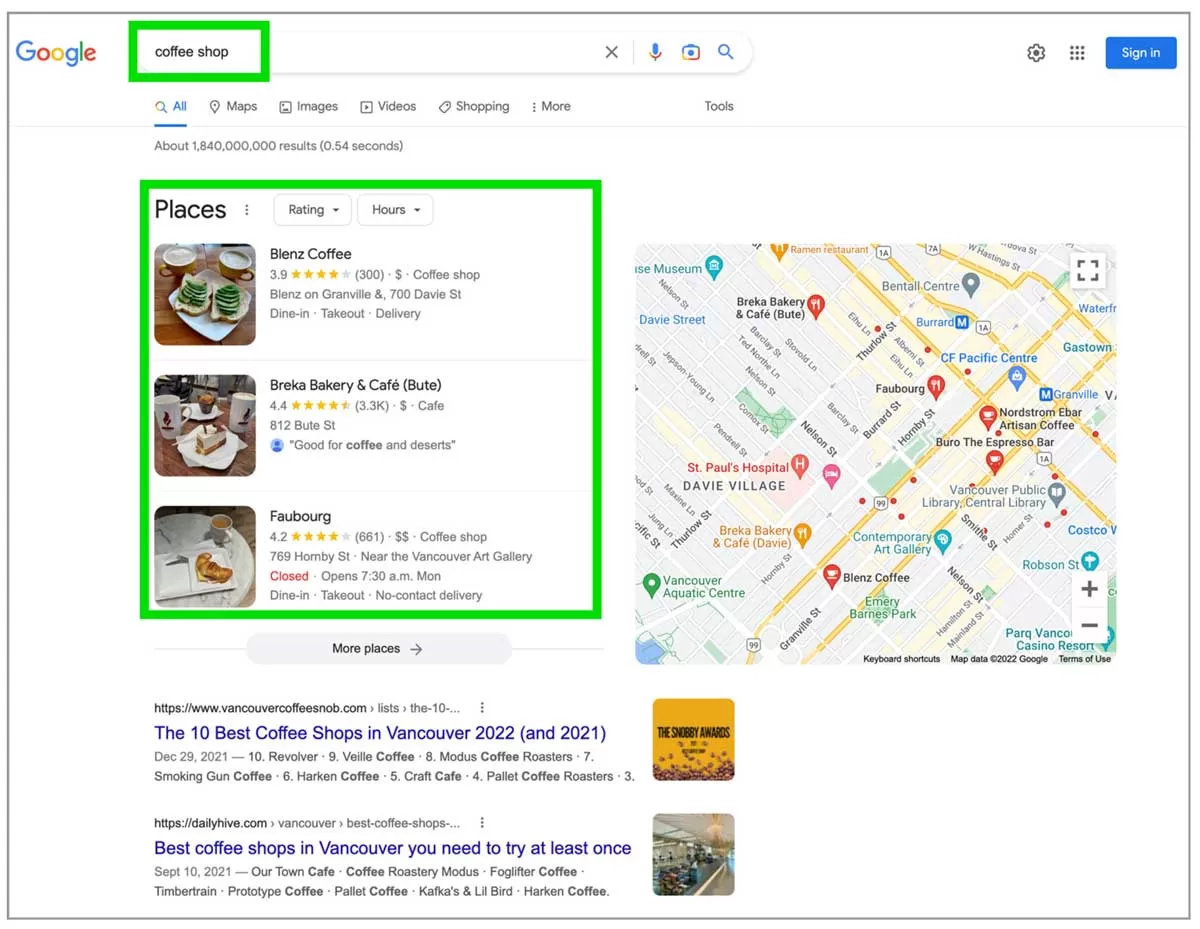
Keyword Research for Local SEO
Keyword research for local SEO is the process of researching and finding keywords that customers use when searching for local products and services.
Appearing within the top Google search results for these keywords drives highly-targeted local traffic to your site and sends more customers your way.
To get started, you need a list of keywords that people can use to find a local business such as yours. You can start with competitor analysis using Google Ads Keyword Planner.
Use Google Ads Keyword Planner
Google’s Keyword Planner helps research keywords for paid search campaigns, but it’s also great for discovering new keywords related to your business.
Start by going to the “Discover new keywords” section and click on the “Start with a website” tab.
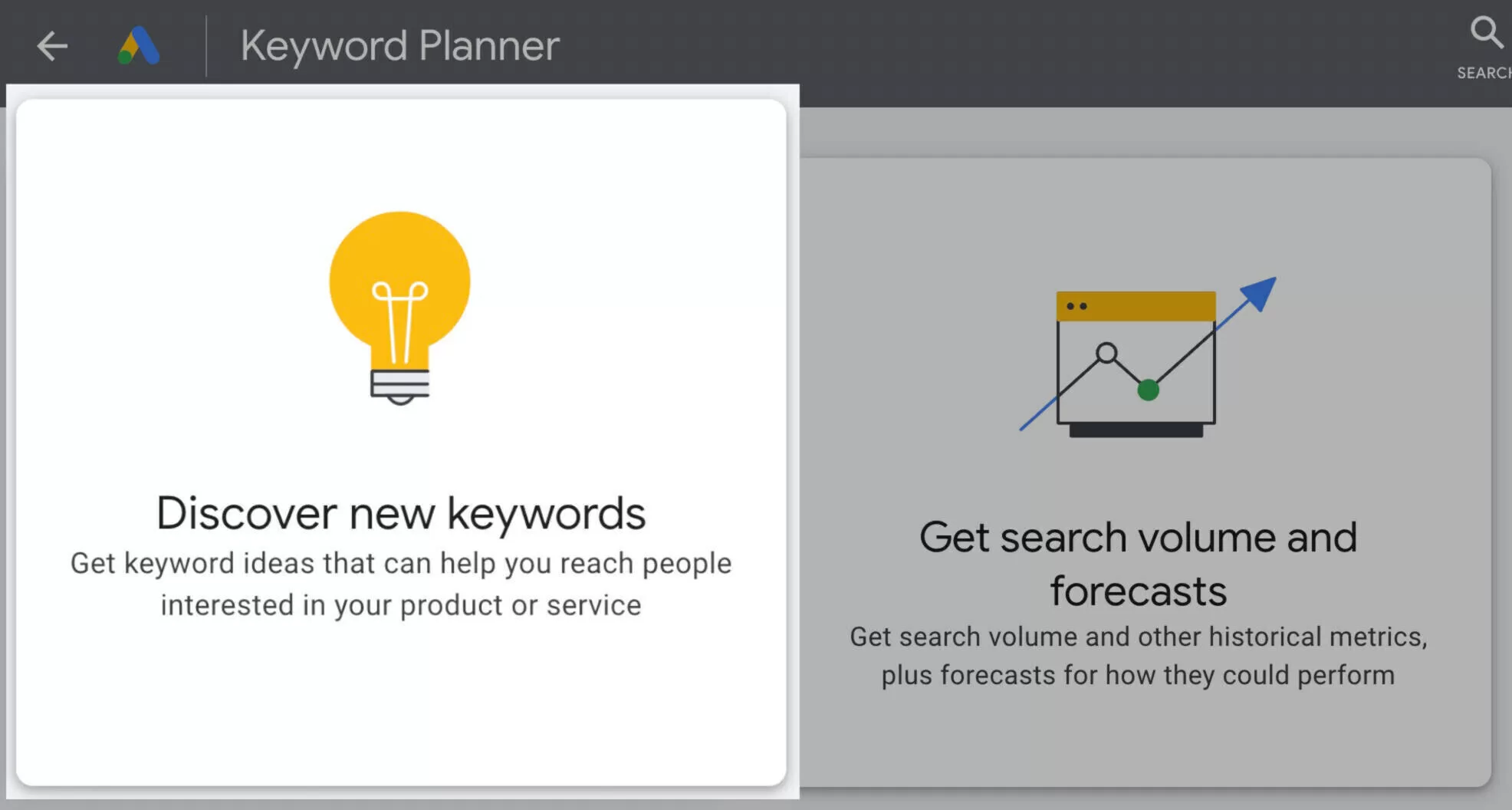
Then, enter the domain of one of your competitors.
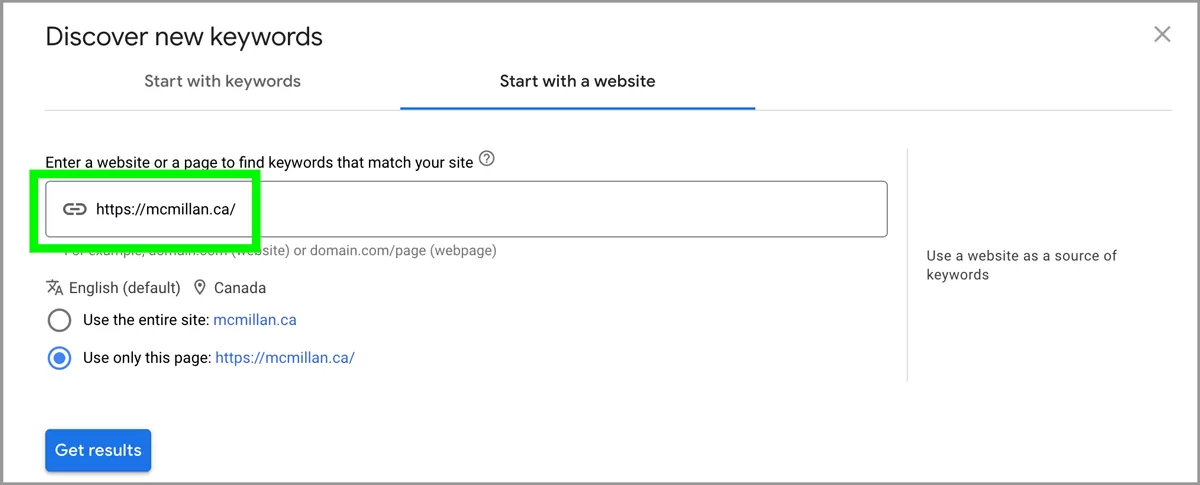
Click “Get results,” and Google will suggest a ton of keywords based on the terms that appear on that page.
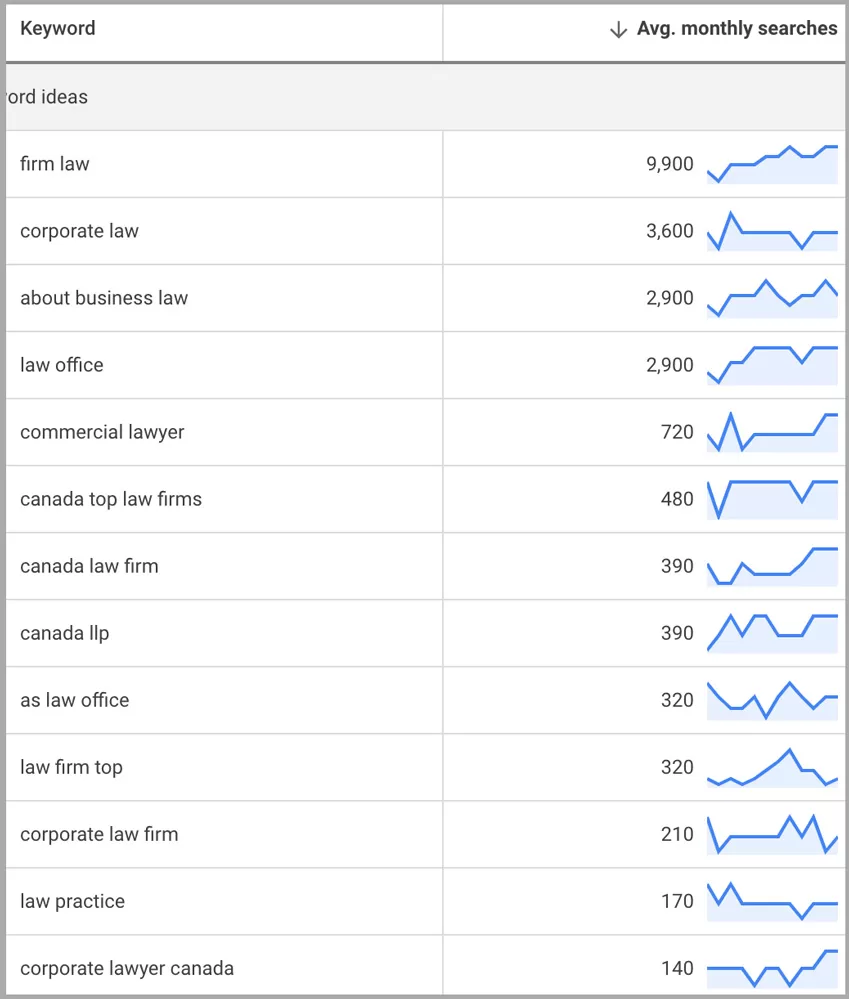
Repeat the process with three of your top competitors and add all the relevant keywords to your list.
Another great feature of Keyword Planner is that it provides search volume data for specific geographic areas. Example:
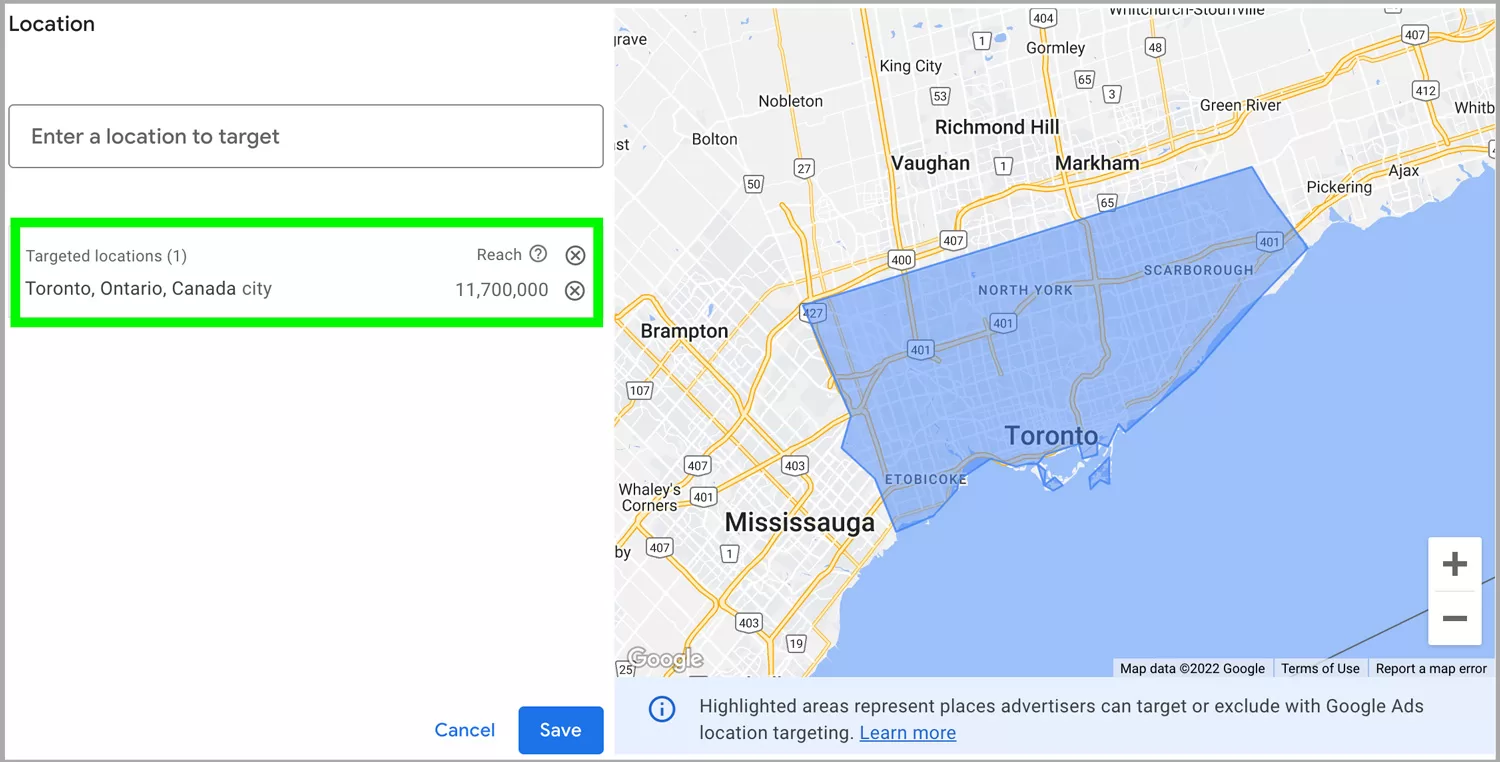
This feature is very helpful when you already have lots of keywords and want to pick the ones to target first.
How to Optimize Your Business for Local SEO
Let’s explore the most important Google local search ranking factors and a few tips on how you can optimize for them.
Google Business Profile
A Google Business Profile (formerly Google My Business) is a free business listing with information about your business. It allows you to provide details like your location, services, products and photos. Then, Google will list it in local search results both on Google search and Google Maps.
According to Google, optimizing your Business Profile is the most important local SEO ranking factor. If you want to appear in Google local pack, you need a Google Business Profile.
Here are a few Business Profile tips:
- Set accurate business hours (including holidays).
- Select various attributes to describe your business (outdoor seating, wifi, etc.).
- Upload photos and videos regularly; this promotes engagement and boosts rankings.
Once you’ve set up the basics of a Google Business Profile account, start optimizing your Google Business Profile regularly by working on the following SEO elements.
Online Reviews
They provide social proof, validate your expertise and give potential buyers confidence in your business. Over 75% of consumers regularly read reviews and consider them to be essential.
Plus, Google recommends replying to reviews to show that you value your customers’s business and feedback.
Backlinks
Backlinks are links on other sites that link back to yours. They’re one of the strongest ranking signals in Google’s search algorithm.
Research has shown that there’s a positive correlation between the numbers of backlinks websites have and their ranking positions. The more quality backlinks a website has, the more likely the website will rank higher on Google search results.
There are lots of unique opportunities local businesses can use to earn backlinks. Examples:
- Reach out to other local (non-competitor) businesses for links.
- Contact your local newspapers and sites to share stories.
- Support and sponsor local events.
On-Page SEO
On-page SEO is the practice of optimizing a page’s content to help it rank higher on organic search results. Examples include:
- Improving website pagspeed.
- Incorporating relevant keywords on the website.
- Writing alternative text for images.
If you have any questions about local SEO, SEO or anything in between, contact us for an initial discovery meeting!

